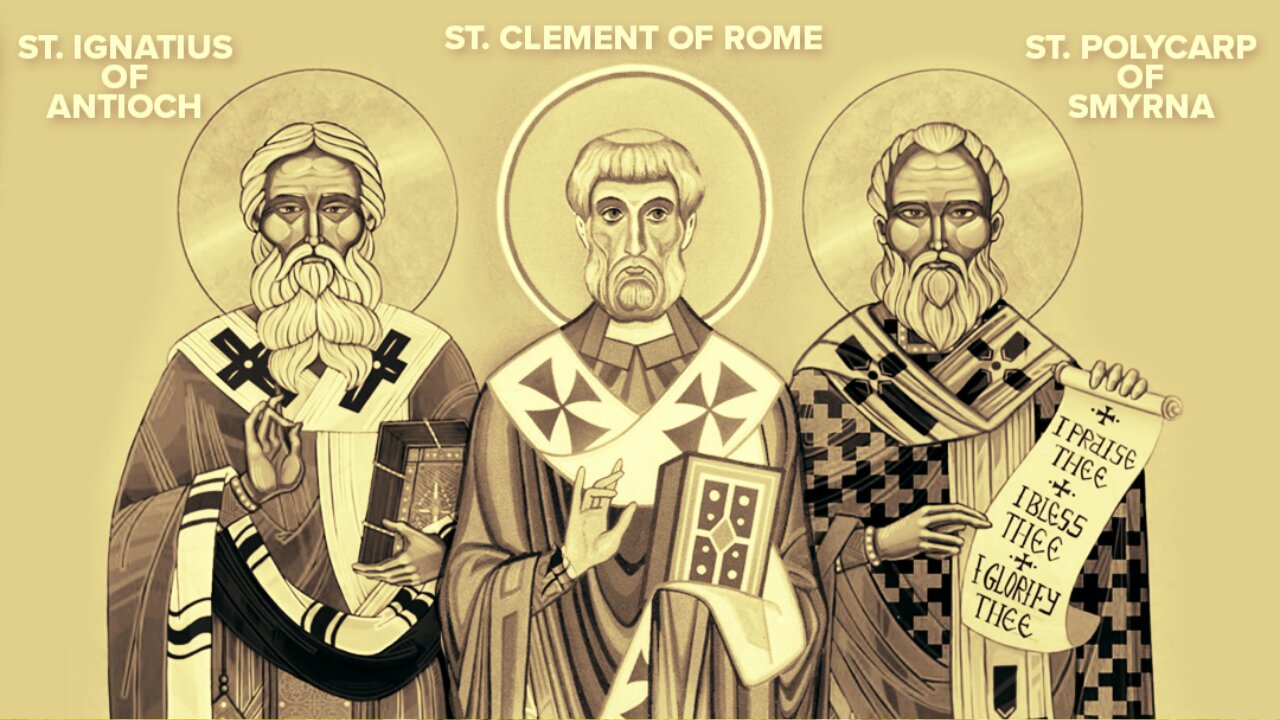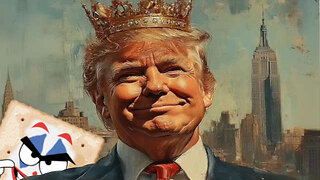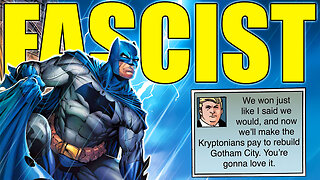Premium Only Content

A Follower of the One True God or the Roman Empire?
Those who refused to worship the emperor and the Roman gods because they had seen the glory of the one true God at his 2nd coming, were persecuted as it was seen as a threat to Roman society and order....
When the persecution did not work, for God was on everyone's heart, they created their own version of Christianity in order to control the large empire: TODAY'S CHRISTIANITY
Constantine created "Christianity" and supported "the church" financially:
1. Funding Church Buildings
Constantine financed the construction of grand churches including:
Old St. Peter’s Basilica (Rome): Built over what was believed to be the tomb of St. Peter.
(WHAT WAS HE TRYING TO HIDE? THE LACK OF A SKELETON!!) 💀
Archbasilica of St. John Lateran (Rome): The first official cathedral of the Pope.
Church of the Holy Sepulchre (Jerusalem): Built on what was believed to be the site of Christ’s crucifixion and resurrection.
Church of the Nativity (Bethlehem): Marking the site of Jesus’ birth.
Hagia Sophia (Constantinople, later rebuilt by Justinian): Though not the famous version built later, Constantine’s church in Byzantium laid the foundation for future Christian architecture.
2. Tax Exemptions for the Church
Constantine granted bishops and clergy exemption from certain taxes, allowing them to accumulate wealth and resources.
3. Imperial Salaries for Clergy
He provided state funds to support bishops and priests, which allowed the church to expand.
4. Donations of Land and Wealth
Constantine donated imperial land and treasures to the church, significantly boosting its financial and social power.
5. Legal Protections and Judicial Powers
He allowed bishops to act as judges in legal disputes, giving them authority beyond religious matters and helping the church become a major institution in governance.
6. Sponsoring Christian Writings and Theological Debates
Constantine funded the production of the Bible. He also sponsored the Council of Nicaea (325 AD), where bishops defined key doctrines of today's Christianity.
His financial and political backing helped today's Christianity to become the dominant religion of the Roman Empire, setting the foundation for medieval Christendom and today's Christianity.
According to historical accounts, Constantine saw a vision in the sky—either a cross or the Greek letters Chi (Χ) and Rho (Ρ), the first two letters of "Christ" in Greek—along with the words "In this sign, you will conquer" (In hoc signo vinces in Latin). That night, he reportedly had a dream in which Christ instructed him to use this sign as a symbol for protection in battle.
After winning the battle against his rival Maxentius, Constantine credited his victory to the Christian God.
How the Roman Empire brought the counterfeit Christianity to the ONE GOD BELIEVERS:
Create a strawman aka controlled opposition and attack it with another strawman
Arius, a presbyter from Alexandria, argued that Christ was not of the same divine essence as God the Father.
Arian-supporting bishops like Eusebius of Nicomedia and Theonas of Marmarica refused to sign the creed and were exiled.
The final wording of the creed was shaped through debates and compromise, with Emperor Constantine pushing for unity. The council overwhelmingly approved the creed, though some bishops were reluctant. It was later expanded in 381 AD at the First Council of Constantinople to clarify the divinity of the Holy Spirit.
The Edict of Serdica (311 AD) was issued by Emperor Galerius, who was the senior Augustus of the Tetrarchy at the time. It was co-signed by Constantine I and Licinius, who were also rulers in the Roman Empire.
Who Drafted It?
The exact author of the text is unknown, but it was likely drafted by imperial officials and legal advisors under Galerius’ direction. Since it was a formal imperial decree, it would have gone through the Roman bureaucracy, with input from:
1. Galerius himself – As the emperor who signed it, he likely influenced its content.
2. His legal and administrative staff – Roman law was highly structured, so legal experts helped shape its wording.
3. Constantine and Licinius – Though junior rulers, they approved it and later expanded its provisions in the Edict of Milan (313 AD).
Why Did Galerius Issue It?
He was originally a strong persecutor of Christians under Diocletian’s Great Persecution (303–311 AD) but he realized that Christianity could not be eradicated and sought religious stability in the empire. ❗️❗️❗️
Key Provisions of the Edict of Serdica
Ended the persecution of the one true God believers and started the counterfeit Christianity.
So they created two controlled opposition lies and out of that was borne the new control of the Roman empire and its citizens
The bishop of Rome (later the Pope) gained authority, mirroring the old imperial system.
The hierarchical church structure resembled the Roman bureaucracy, with bishops acting like provincial governors.
-
 1:05:20
1:05:20
END TIMES DECEPTION
4 months agoSatan’s Final Attack Before His Destruction
70 -
 2:57:02
2:57:02
VapinGamers
6 hours ago $2.44 earnedAltheia - The Wrath of Aferi - Game Review and Playthru - !rumbot !music
19.4K1 -
 2:06:32
2:06:32
TimcastIRL
8 hours agoLeftist NO KINGS Protest Begins, Antifa EMBEDS, Riots & Violence FEARED Nationwide | Timcast IRL
202K165 -
 2:50:31
2:50:31
TheSaltyCracker
8 hours agoHail to the King ReeEEStream 10-17-25
87.6K182 -
 56:04
56:04
Man in America
16 hours agoGold’s OMINOUS Warning: A Global Monetary Reset That’ll BLINDSIDE Americans
53.9K18 -
 1:33:32
1:33:32
Flyover Conservatives
1 day ago3 Winning Mindsets for Building Life-Changing Habits - Clay Clark; Why Employers Are Ditching DEI - Andrew Crapuchettes | FOC Show
46.4K -
 4:04:15
4:04:15
SynthTrax & DJ Cheezus Livestreams
1 day agoFriday Night Synthwave 80s 90s Electronica and more DJ MIX Livestream POST DISCO / FUNK / R & B Edition
46.8K1 -
 51:18
51:18
Degenerate Jay
17 hours ago $2.89 earnedJournalist Claims Batman Is A Fascist Like Donald Trump
42.3K8 -
 1:18:27
1:18:27
Glenn Greenwald
13 hours agoGlenn Takes Your Questions on Major Saudi Arabia Celeb Controversies, Zohran Mamdani and the NYC Debate, Anti-ICE Protests, and More | SYSTEM UPDATE #533
135K35 -
 1:13:26
1:13:26
Tundra Tactical
13 hours ago $5.42 earned🛑{LIVE NOW} Gun Nerd Plays Battlefield 6 Great Tundra Nation Get Together Day 4
32K1